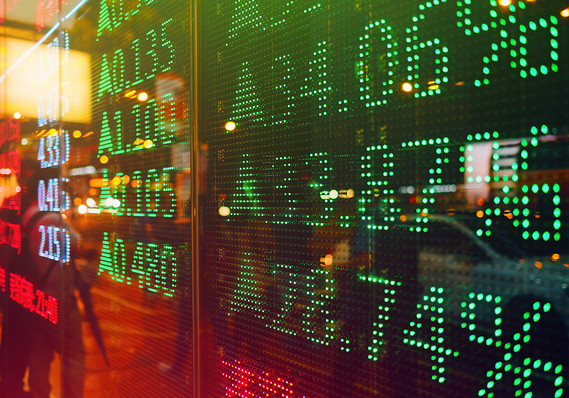 Getty Images
Getty Images As the universe of exchange-traded funds in general, and passively-managed ETFs in particular, has exploded, so have worries about market contagion. If investors panic-sell all at once, the concern goes, the massive concentrations of securities within certain funds could make markets seize up.
New research from iShares, the ETF arm of BlackRock Inc., BLK, -2.37% attempts to lay that fear to rest. The vast majority of trading happens between investors, on what’s called “the secondary market,” meaning the broader financial marketplace is not impacted.
The ETF industry is supported by what iShares calls a “robust, dynamic ‘ecosystem’ made up of many players.” One of the primary innovations that distinguish ETFs from mutual funds is the fact that they are traded between investors on an exchange, as opposed to mutual funds, which are purchased or redeemed from the fund manager.
Read: Three fund managers may soon control nearly half of all corporate voting power, researchers warn
But, as iShares makes clear, that “ecosystem” doesn’t just include buyers and sellers. It’s also made up of what are known as “authorized participants” and “market makers.”
Those entities are large financial institutions that work directly with an ETF provider to “dynamically” manage the creation and redemption of ETF shares. Authorized participants are usually banks, like Goldman Sachs GS, -1.51% or Citigroup C, -2.57%, that have agreements with ETF sponsors to engage in this activity. Market makers are broker-dealers that provide the same kind of liquidity, by buying and selling shares of a fund with investors. Market makers include some less-familiar companies like Jane Street and Virtu Financial.
iShares’ new research draws on filings that fund companies make every year to the Securities and Exchange Commission to determine just how robust the authorized participant and market maker universe is.
Related: Welcome to the adult table: SEC sets new ETF rules
There are 51 contracted authorized participants (APs) among ETFs listed in the U.S., of which 35 are “active,” which means they have created or redeemed shares of an ETF within the fund’s most recent fiscal year, iShares notes. On average, U.S.-domiciled ETFs have 22 contracted and five active authorized participants.
Of course, bigger funds have more support, while smaller funds may have no trading activity on the primary market, meaning all trading activity may be between investors. Still, “even small ETF issuers by (assets under management) utilize the breadth of the ETF marketplace and engage with multiple APs,” iShares wrote.
But the bigger takeaway is just how much activity in the ETF ecosystem happens on the exchange. Creations and redemptions represent just 20% of ETF trading on average, the iShares paper concludes. “This means that 80% of ETF trading – $8 out of every $10 – takes place between investors on exchange.”
In a morning tweet, CFRA analyst Todd Rosenbluth applauded the finding and said he hoped the research would put to rest some fears about the reach of ETFs in the financial markets.
Related: There’s a ‘bubble’ in passive investing, says investor made famous by ‘Big Short’










Add Comment